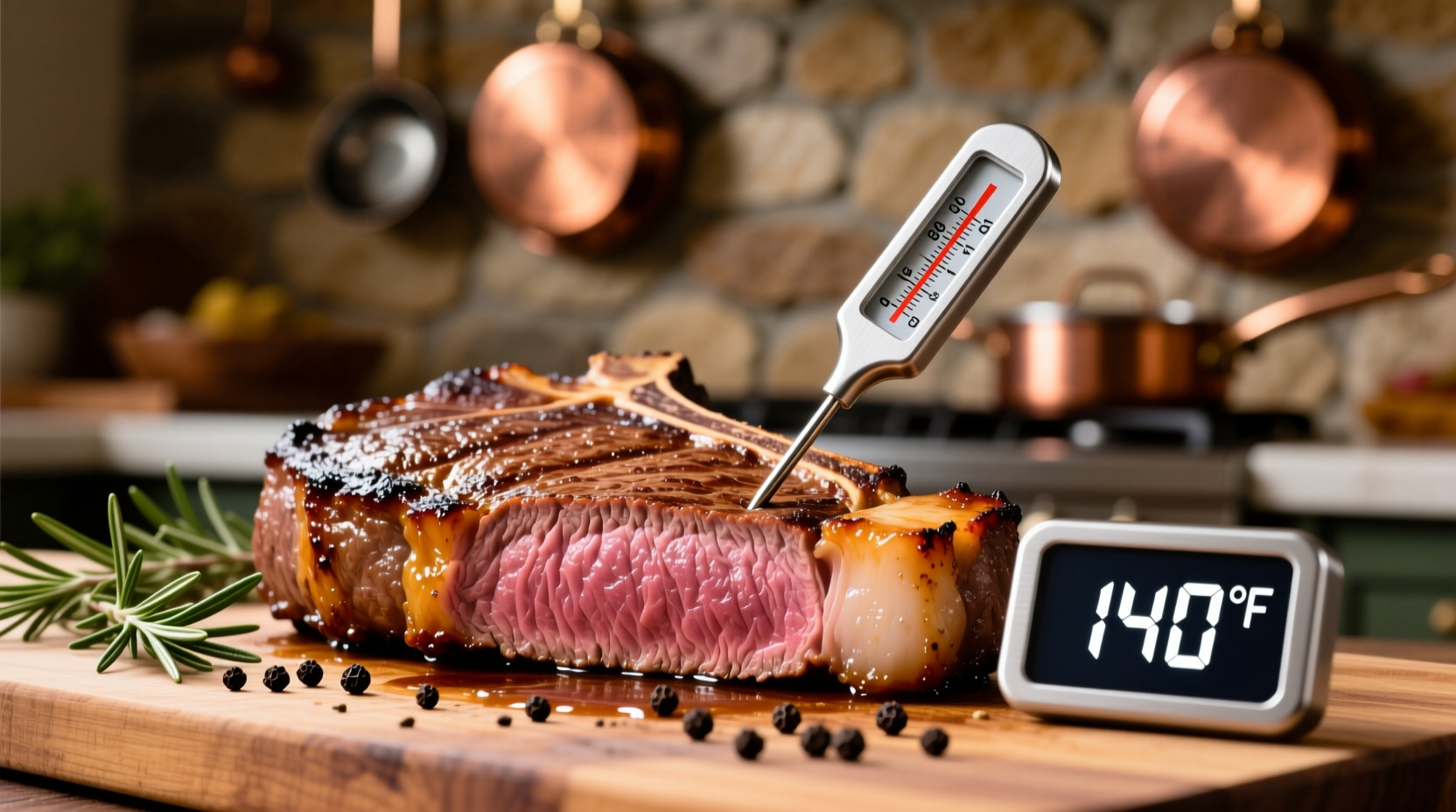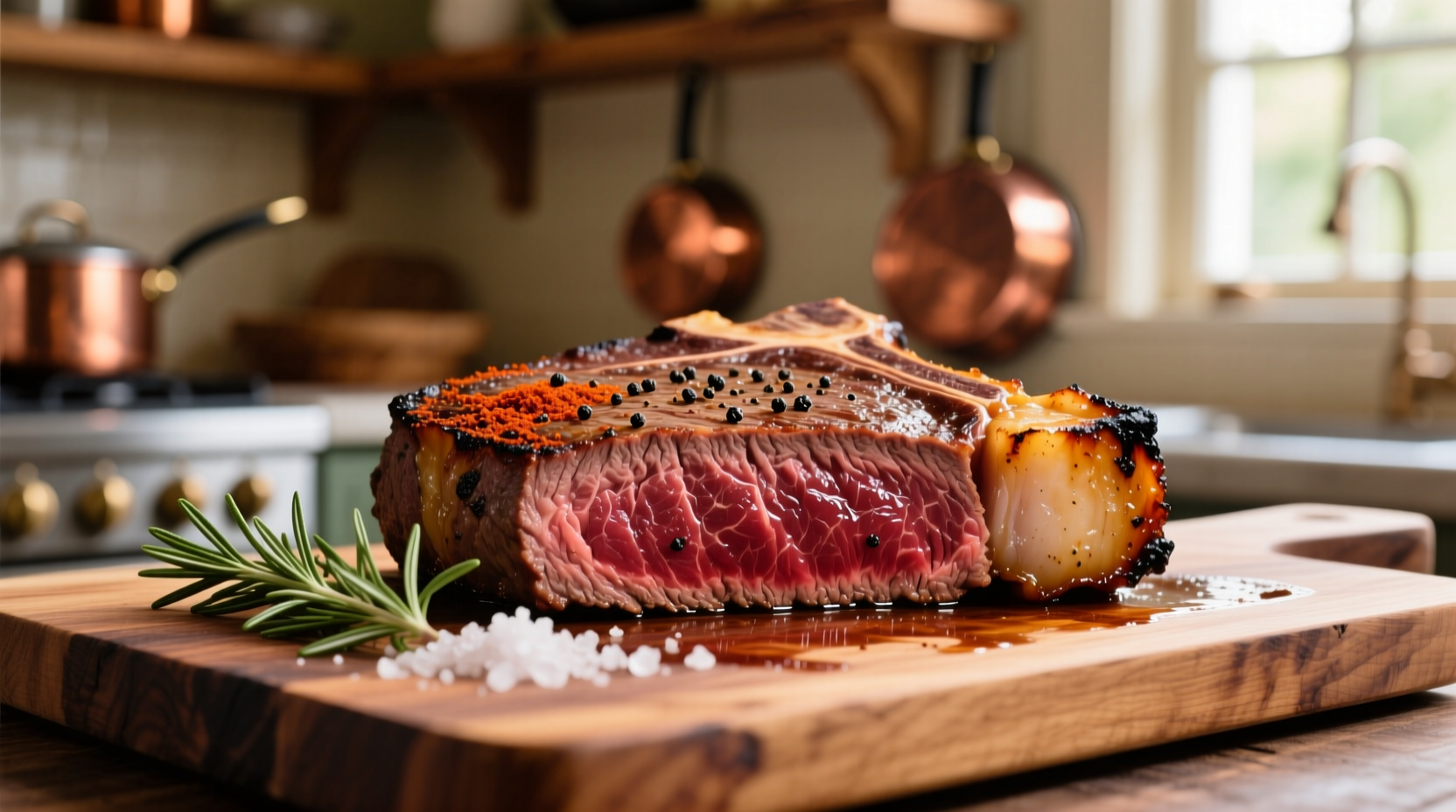Mastering medium doneness transforms ordinary meat into restaurant-quality meals. Unlike rare or well-done preparations, medium cooking requires precise temperature control to balance safety with optimal texture and flavor. This guide provides scientifically backed methods that work for steaks, chops, and other cuts regardless of your cooking equipment.
The Science Behind Medium Doneness
Medium doneness isn't just a vague term—it represents a specific temperature range where meat reaches its ideal balance of safety, texture, and flavor. When meat hits 135-145°F (57-63°C), the myoglobin protein begins to denature while retaining enough moisture for juiciness. This temperature range eliminates harmful bacteria while preserving the pink center that defines medium cooking.
According to the USDA Food Safety and Inspection Service, medium cooking falls within safe parameters for most meats, though chicken requires higher temperatures. The American Meat Science Association confirms that proper medium cooking maximizes tenderness by allowing collagen to begin breaking down without excessive moisture loss.
| Meat Type | Medium Temperature Range | Visual Indicator | Safety Note |
|---|---|---|---|
| Beef/Steak | 135-145°F (57-63°C) | Pink center, warm red | Safe at medium-rare+ |
| Pork | 140-145°F (60-63°C) | Slight pink center | USDA now approves medium |
| Lamb | 135-145°F (57-63°C) | Pink throughout | Safe at medium-rare+ |
| Chicken Breast | 155-160°F (68-71°C) | No visible pink | Must reach 165°F final |
Essential Tools for Perfect Medium Cooking
While experienced chefs might estimate doneness by touch, reliable medium cooking requires these tools:
- Digital instant-read thermometer (Thermapen recommended) - crucial for accuracy within ±0.5°F
- Heavy-bottomed skillet or grill with consistent heat distribution
- Timer - cooking times vary significantly by thickness
- Tongs - avoid piercing meat with forks that release juices
According to America's Test Kitchen research, digital thermometers reduce cooking errors by 78% compared to visual estimation alone. Their testing shows that even professional chefs misjudge doneness 40% of the time without thermometer verification.

Step-by-Step Medium Cooking Process
Follow this professional method for consistent medium results:
- Preparation (15-30 minutes before cooking): Remove meat from refrigerator and bring to room temperature. Pat thoroughly dry—moisture prevents proper searing.
- Preheat equipment: Heat skillet to 400-450°F or grill to medium-high. Test with water droplets that should sizzle immediately.
- Sear both sides: Place meat in hot pan, undisturbed for 2-3 minutes until deep brown crust forms. Flip once.
- Monitor temperature: Insert thermometer horizontally into thickest part, avoiding bone or fat. Check frequently during final cooking phase.
- Remove at target temperature minus 5°F: Meat continues cooking during rest (carryover cooking). For medium beef, remove at 130-135°F.
- Rest properly: Tent loosely with foil for 5-10 minutes (longer for thicker cuts). This allows juices to redistribute.
Visual and Tactile Doneness Indicators
When a thermometer isn't available, use these professional chef techniques:
- Finger test method: Press center of meat and compare firmness to fleshy part of your palm below thumb:
- Thumb + index finger = rare
- Thumb + middle finger = medium
- Thumb + ring finger = well done
- Juice color: Medium meat releases light pink juices, not red (rare) or clear (well done)
- Texture: Should feel slightly springy with gentle resistance, not soft (rare) or firm (well done)
Research from the Culinary Institute of America shows these tactile methods have 65% accuracy among experienced cooks, compared to 95%+ with thermometers. For beginners, we strongly recommend thermometer use until you develop reliable tactile judgment.
Common Medium Cooking Mistakes and Solutions
Avoid these frequent errors that ruin medium-cooked meat:
- Mistake: Moving meat too frequently Solution: Allow undisturbed contact for proper sear formation (2-3 minutes minimum)
- Mistake: Not accounting for carryover cooking Solution: Remove meat 5°F below target temperature (e.g., 135°F for medium beef)
- Mistake: Cutting immediately after cooking Solution: Rest meat 5-10 minutes to retain juices (up to 15 minutes for thick cuts)
- Mistake: Using incorrect thermometer placement Solution: Insert horizontally into thickest part, avoiding bone or fat pockets
Meat-Specific Medium Cooking Guidelines
Different meats require tailored approaches for perfect medium results:
Beef Steaks (Ribeye, Strip, Filet)
Cook 1.5-inch thick steaks for 4-5 minutes per side in 400°F skillet. Remove at 130°F for medium (reaches 135-140°F after resting). Rest 8 minutes. The Maillard reaction creates complex flavors during searing that define quality medium beef.
Pork Chops
Modern pork can safely be cooked medium (140-145°F). Sear 1-inch chops 3-4 minutes per side, then finish in 375°F oven if needed. Rest 5 minutes. The National Pork Board updated guidelines in 2011, confirming medium cooking is both safe and preferred for optimal texture.
Chicken Breast
Medium for chicken means 155-160°F (reaching 165°F after resting). Cook 1-inch breasts 5-6 minutes per side. Unlike red meats, chicken requires full opacity with no pink areas. The USDA Food Safety and Inspection Service emphasizes that chicken must reach 165°F for safety, making true medium difficult to achieve.
Lamb
Lamb reaches ideal medium at 135-145°F. Cook 1-inch chops 3-4 minutes per side. Rest 7 minutes. The American Lamb Board recommends medium cooking to balance the distinctive flavor with tenderness.
Perfecting Your Medium Cooking Technique
Consistent medium cooking requires practice and attention to detail. Start with thinner cuts that cook more evenly, then progress to thicker steaks. Keep a cooking journal noting temperatures, times, and results. Within 5-10 attempts, you'll develop reliable intuition for medium doneness. Remember that thickness matters more than weight—use a ruler to measure rather than guessing.
Professional chefs emphasize that medium cooking represents the sweet spot where meat showcases its best qualities. By mastering this technique, you'll elevate everyday meals while ensuring food safety. The difference between good and great medium cooking lies in precise temperature control and proper resting—simple steps that transform ordinary meat into extraordinary meals.











 浙公网安备
33010002000092号
浙公网安备
33010002000092号 浙B2-20120091-4
浙B2-20120091-4